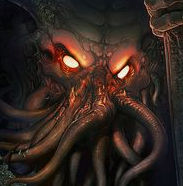> Resize the map image, not the grid. Well, sure, but essentially what this is saying is that roll20 only supports 70 px, which is not far from the argument I made initially. Yes, it supports other resolutions, but awkwardly and poorly. However, when you are coming from Dungeon Alchemist, and want to export the image, walls, doors and lighting, this is not an option, since it only supports 72, 150 and 300. If you have doors, windows, walls and lighting, you have to use one of those resolutions and edit the roll20 px or nothing will line up. I messed around with editing the coordinates in the UVTT file, and this is possible, if not a bit complicated. I may come back and revisit this, if exporting at 72 and adjusting the px is troublesome, but I imagine all the issues would be much less pronounced at 72/70 versus 150/70. DA also complicates things by giving you a "border", 4 cells for "normal" or 1 cell for "small", meaning a 21x11 map would be 23x13 if using "small". A typical screen viewport (1080p) supports about 22x12 without scrolling (27x12 if you hide the tools and chat). For custom maps, I try to keep them less than or equal to 44x24, to minimize both scrolling and map switching. But often times, I'm working from an existing map, so the dimensions can be all over the place. I've made some extremely large maps that have to be exported as lower quality jpg to fit under the 20mb limit. Other than that, they work just fine. I tested <a href="https://webglreport.com/?v=2" rel="nofollow">https://webglreport.com/?v=2</a> on two machines, a dedicated gaming pc and a laptop and both read Max Texture Size: 16384 . This only makes sense to me if WebGL doesn't utilize your GPU, yet right there in the opening description of webgl is > executed on a computer's Graphics Processing Unit (GPU) I wonder if this is blocked by some flag. Well, according to chrome://gpu, webgl/2 h/w acceleration is enabled on both the laptop and the desktop. That px size must be a webgl limit, otherwise I'd expect to get different results from wildly different machines.






